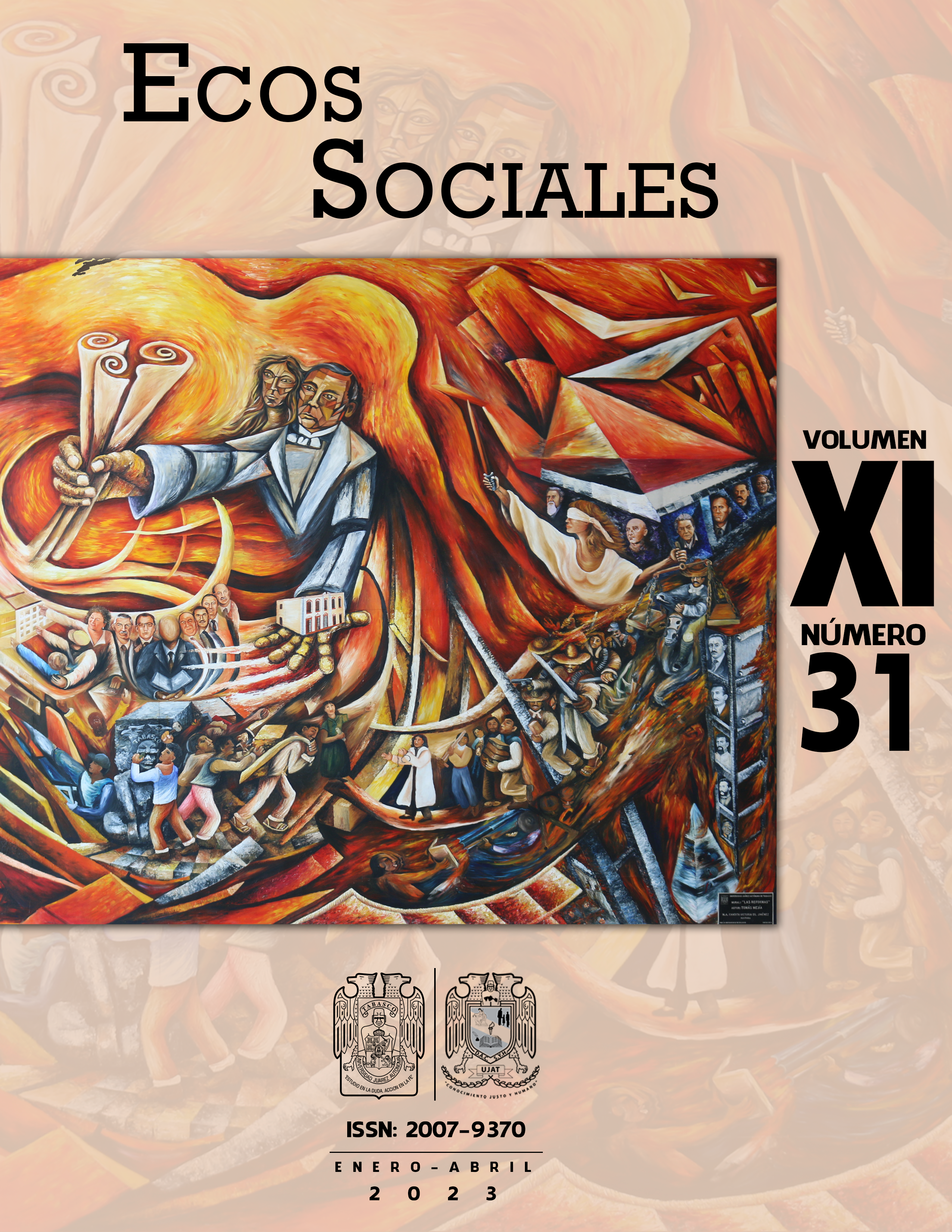PREVENCIÓN DE LOS CIBERCRIMENES EN LA NIÑEZ
PREVENTION OF CYBERCRIME IN CHILDHOOD
DOI:
https://doi.org/10.19136/es.v11i31.5764Palabras clave:
Cibercrimen, Niñez, Internet, Tecnología, CiberseguridadResumen
En el presente artículo se explora cómo la niñez se relaciona con las nuevas tecnologías, como son vulnerables a distintos crímenes perpetrados haciendo uso de las tecnologías de información y comunicación y cuáles son las acciones necesarias para establecer una adecuada cultura de ciberseguridad con el fin de prevenir que esta sea víctima de los cibercrimenes.
This article explores how children relate to new technologies, how they are vulnerable to different crimes perpetrated using information and communication technologies and what actions are necessary to establish an adequate cybersecurity culture in order to prevent them from becoming victims of cybercrimes.
Referencias
Amosun, P. A., & Ige, O. A. (2013). Impact of an Action Cyber Crime Prevention Programme on In-School Aged Children’s Attitude to Crime Prevention Concepts in Civic Education and Social Studies. European Scientific Journal, 9(21).
Anderson, M. Parents, (7 de enero del 2016). Teens and Digital Monitoring. Pew Research Center: Internet, Science & Tech. Recuperado de https://www.pewresearch.org/internet/2016/01/07/parents-teens-and-digital-monitoring/
Asociación de Internet Mx. (2021) Ciberseguridad en Empresas, Usuarios de Internet y Padres de Familia en México 2021. https://irp.cdn-website.com/81280eda/files/uploaded/Estudio%20de%20Ciberseguridad%20AIMX%202021%20%28Pu%CC%81blica%29%2020210614.pdf
Comisión Nacional para la Protección y Defensa de los Usuarios de Servicios Financieros. (2020), Fraudes cibernéticos y tradicionales. https://www.condusef.gob.mx/documentos/comercio/FraudesCiber-3erTrim2020.pdf
Daoud, R., Starkey, L., Eppel, E., Vo, T. D., & Sylvester, A. (2020). The educational value of internet use in the home for school children: A systematic review of literature. Journal of Research on Technology in Education, 53(4), 353-374.
Europol. (2021). Europol’s 2020 internet organized crime threat assessment. https://www.europol.europa.eu/activities-services/main-reports/internet-organised-crime-threat-assessment-iocta-2020
FBI. (2021). IC3 2020 Internet Crime Report. https://www.ic3.gov/Media/PDF/AnnualReport/2020_IC3Report.pdf
FBI. (2022). TRITON Malware Remains Threat to Global Critical Infrastructure Industrial Control Systems (ICS). https://docs.house.gov/meetings/JU/JU00/20220329/114533/HHRG-117-JU00-20220329-SD009.pdf
Garcés Nava A. E. (2021). La parte especial del código penal nacional. El impacto de las nuevas tecnologías para la creación de nuevos tipos penales. INACIPE
González, S. (10 de Marzo de 2022). Ciberataques a la infraestructura crítica de un país y sus consecuencias, Welivesecurity, https://www.welivesecurity.com/la-es/2022/03/10/ciberataques-infraestructura-critica-pais-consecuencias/
Instituto Nacional de Estadística y Geografía. (2022). Censo nacional de seguridad pública federal 2022-1. https://www.inegi.org.mx/contenidos/saladeprensa/boletines/2022/CNSPF/CNSPF-2022.pdf
Internet Matters. (2021, October 27). What parents need to know about inappropriate content. https://www.internetmatters.org/issues/inappropriate-content/learn-about it/#:~:text=Inappropriate%20content%20includes%20information%20or,Content%20containing%20swearing
John, A., Glendenning, A. C., Marchant, A., Montgomery, P., Stewart, A., Wood, S., & Hawton, K. (2018). Self-harm, suicidal behaviours, and cyberbullying in children and young people: Systematic review. Journal of medical internet research, 20(4), e9044.
Kaspersky. (21 de Octubre del 2022) What is a firewall? Definition and explanation. https://www.kaspersky.com/resource-center/definitions/firewall
Kaspersky. (s.f.). Internet Safety for Children: Tips to Keep Kids Safe Online. https://www.kaspersky.com/resource-center/preemptive-safety/kids-online-safety
Ley General de los Derechos de Niñas Niños y Adolescentes [LGDNNA]. Artículo 5, 4 de diciembre de 2014 (México)
Ley Nacional del Sistema Integral de Justicia Penal para Adolescentes. [LNSIJPA], Artículo 3, 16 de junio de 2016 (México)
Martínez Verastegui , A., Andrés Hernández, P., Hernández Reyes, G. Y. (2022). Derechos de niñas, niños y adolescentes. Centro de Estudios Constitucionales SCJN
Montessori Canela Internacional (2022, October 7). Observatorio sobre el uso de internet en menores de edad. https://www.montessoricanela.com/observatorio-sobre-el-uso-de-internet-en-menores-de-edad-riesgos-beneficios-y-limites/
National Center for Missing & Exploited Children. (2022) CyberTipline Statistics. https://www.missingkids.org/gethelpnow/cybertipline/cybertiplinedata#files
Nixon, C. L. (2014). Current perspectives: the impact of cyberbullying on adolescent health. Adolescent health, medicine and therapeutics, 143-158.
Norton, (18 de enero del 2018). How to choose a secure password. https://us.norton.com/blog/how-to/how-to-choose-a-secure-password
NortonLifeLock. (2020) 2020 Norton Cyber Safety Insights Report: Special Release – Home & Family. Recuperado de https://www.nortonlifelock.com/content/dam/nortonlifelock/pdfs/infographics/2022_NLCSIR_HomeFamily_Report_FINAL.pdf
Organization for Economic Cooperation and Development. (2019). What do we know about children and technology? https://www.oecd.org/education/ceri/Booklet-21st-century-children.pdf
O'Gorman, G., & McDonald, G. (2012). Ransomware: A growing menace. Arizona, AZ, USA: Symantec Corporation.
ONU: Asamblea General, Convención sobre los Derechos del Niño, 20 Noviembre 1989, United Nations, Treaty Series, vol. 1577, p. 3, https://www.refworld.org.es/docid/50ac92492.html
Rusch, J. J. (1999, June). The “social engineering” of internet fraud. In Internet Society Annual Conference. http://taupe.free.fr/book/psycho/social%20engineering/TheSocial%20Engineering%20of%20Internet%20Fraud.pdf
Sammons, J., & Cross, M. (2016). The Basics of Cyber Safety: Computer and Mobile Device Safety Made Easy. Syngress.
Smith, P. K., Mahdavi, J., Carvalho, M., Fisher, S., Russell, S., & Tippett, N. (2008). Cyberbullying: Its nature and impact in secondary school pupils. Journal of Child Psychology and Psychiatry, 49(4), 376-385. doi: 10.1111/j.1469-7610.2007.01846.x
Sproule, S., & Archer, N. (2007, July). Defining identity theft. In Eighth World Congress on the Management of eBusiness (pp. 20-20). IEEE.
Stouffer, C. (16 de Junio de 2022), What is 2FA? A simplified guide to two-factor authentication. NortonLifeLock. Recuperado de https://us.norton.com/blog/privacy/what-is-2fa#
United Nations Office on Drugs and Crime. (Febrero del 2020). E4J, University Module Series, Cybercrime. Recuperado el 29 de Marzo del 2023 de https://www.unodc.org/e4j/en/cybercrime/module-1/key-issues/cybercrime-in-brief.html
Universidad Europea, (19 de Abril del 2022), ¿Qué es la ciberseguridad?. https://universidadeuropea.com/blog/que-es-ciberseguridad/
Whittle, H. C., Hamilton-Giachritsis, C., & Beech, A. R. (2013). Victims’ voices: The impact of online grooming and sexual abuse. Universal Journal of Psychology, 1(2), 59-71. https://citeseerx.ist.psu.edu/document?repid=rep1&type=pdf&doi=174428aa5fe3e452a55a14fc2c7512e8735c07fe
Descargas
Publicado
Número
Sección
Licencia
Derechos de autor 2024 Autores & UJAT

Esta obra está bajo una licencia internacional Creative Commons Atribución-NoComercial-CompartirIgual 4.0.



